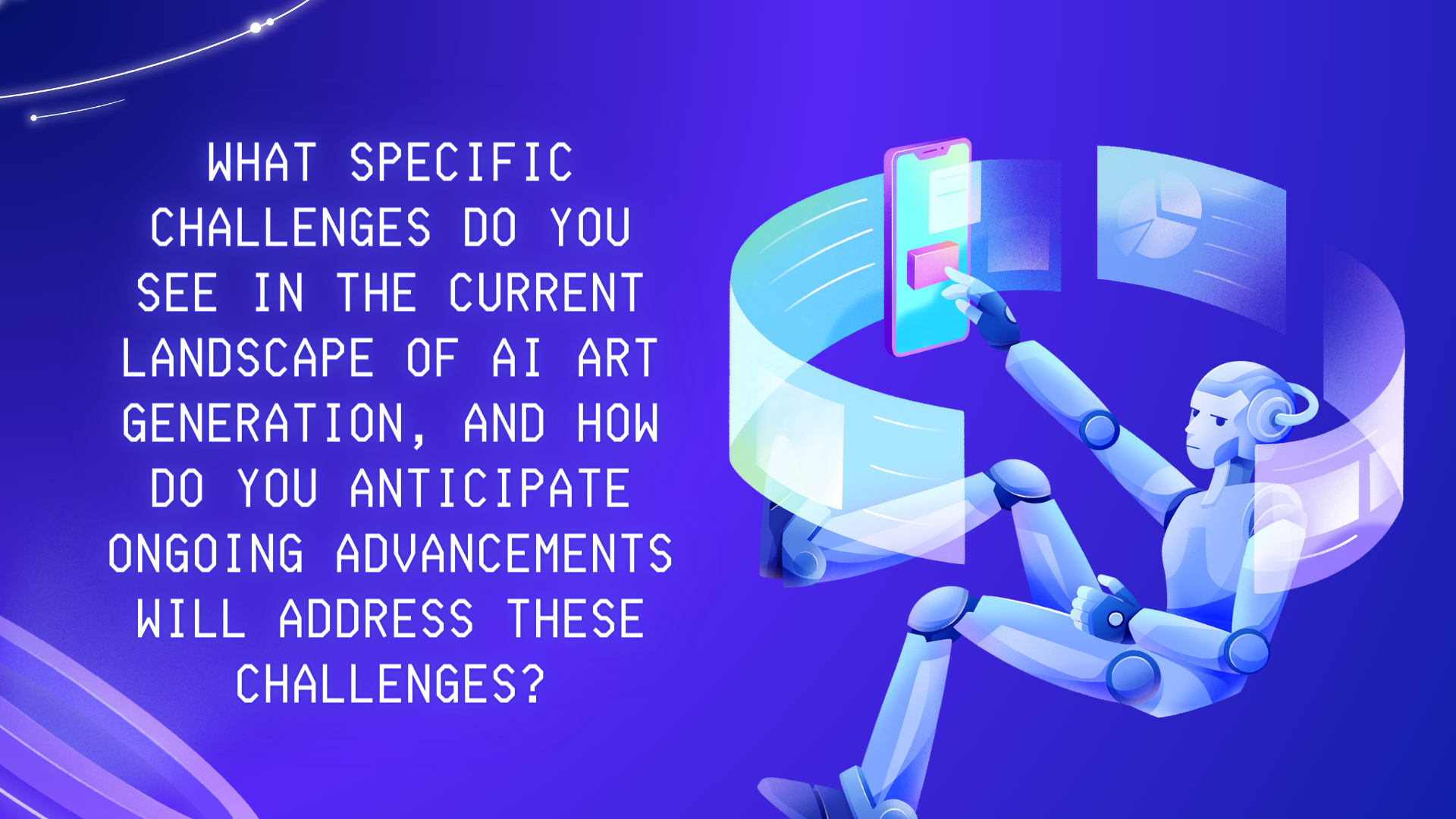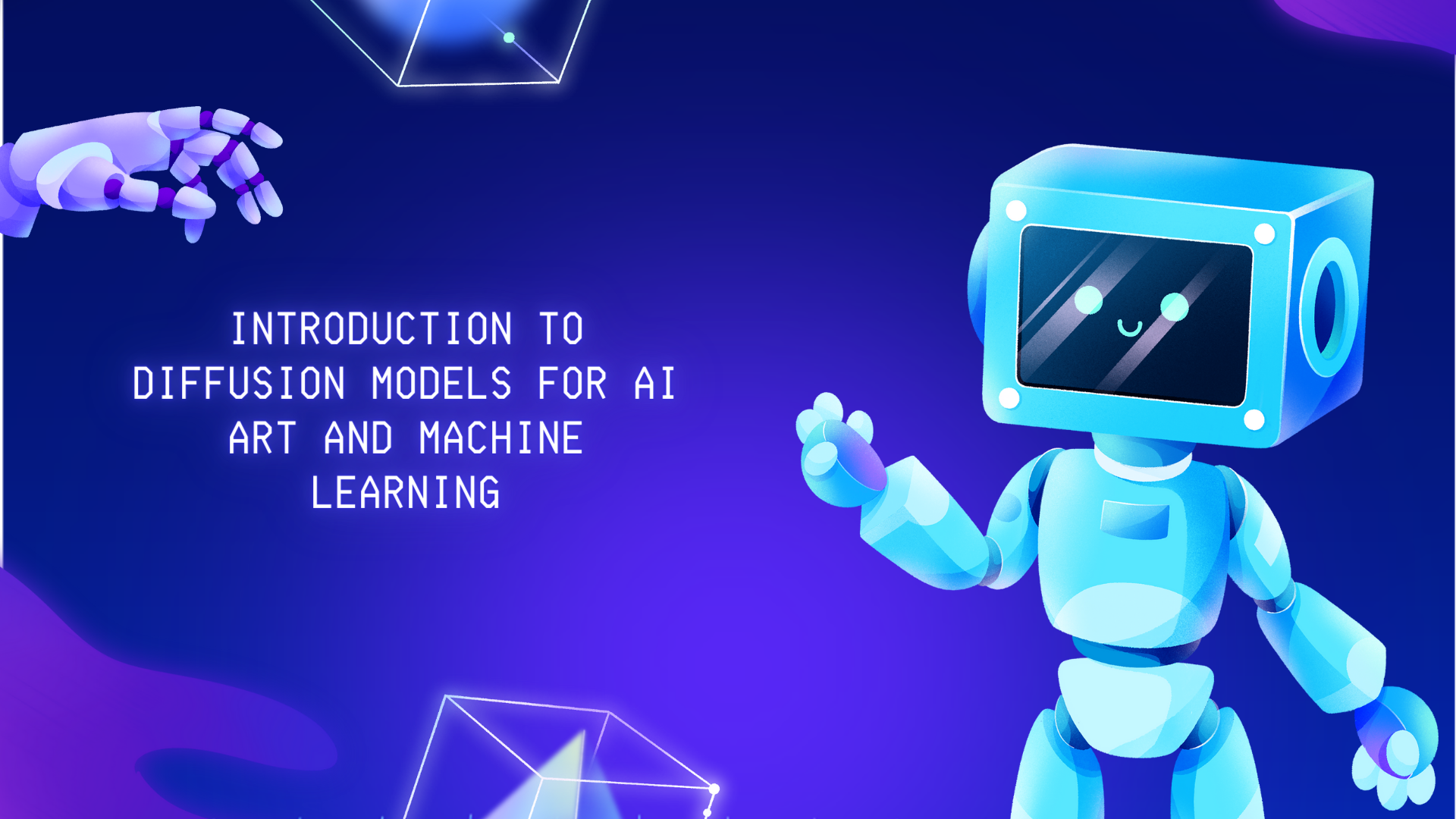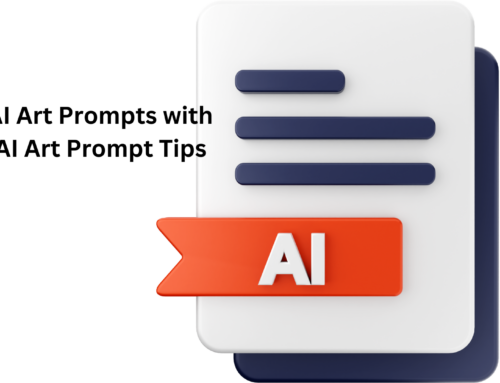Artificial Intelligence (AI) has taken the world by storm, and one of its most fascinating applications is in generating art. There are several AI art generation models out there, each with its own unique approach and style. One popular type is Diffusion Models for AI art, which work by iteratively refining an image through a series of diffusion steps. These models are known for their ability to produce high-quality and diverse images with intricate details. On the other hand, Generative Adversarial Networks (GANs) have gained immense popularity for their ability to generate realistic images by pitting two neural networks against each other – one generating images and the other discerning whether they’re real or fake.
Understanding Stable Diffusion Models in Generative AI
So, what’s the deal with these Diffusion Models for AI art? Well, let me break it down for you in simple terms. Imagine you’re trying to teach a machine to create images. Now, this machine, through something called a diffusion process, gradually refines its understanding of what images should look like. It’s like giving it a bunch of examples and letting it learn from them bit by bit. This process makes the model stable, meaning it can reliably generate high-quality images over time.
Now, when we talk about Diffusion Models for AI art, we’re talking about a specific approach in the world of machine learning. Think of it as a cousin to other techniques like GANs (Generative Adversarial Networks) or language models. But what sets diffusion models apart is how they handle the generation of images. Instead of relying solely on a dataset or a prompt like some other models, diffusion models work by iteratively improving a latent representation of an image. This means they can take in new data and continuously enhance their understanding, resulting in consistently impressive image quality. So, whether you’re familiar with DALL-E or other generative AI, diffusion models offer a promising avenue for advancing the field of AI art.


Generative Adversarial Networks (GANs) are renowned for their ability to produce highly realistic and diverse artworks by pitting two neural networks against each other, one generating images and the other discerning between real and generated ones explains Shubham, an AI media specialist at demandsage.com, whose insights have been featured in prominent platforms like Hubspot, Semrush, IBM, Forbes, and many more. “As an experienced AI media specialist, I can shed light on the nuanced differences between various AI art generation models and their respective capabilities. Generative Adversarial Networks (GANs) are renowned for their ability to produce highly realistic and diverse artworks by pitting two neural networks against each other, one generating images and the other discerning between real and generated ones. This results in remarkably authentic outputs across various styles and genres, often indistinguishable from human created art. On the other hand, Variational Autoencoders (VAEs) prioritize the generation of diverse and imaginative art by learning underlying representations of data and sampling from them to produce novel outputs. While VAEs may not consistently achieve the photorealism of GANs, they excel in generating abstract and surreal compositions, pushing the boundaries of creativity.
Strengths and weaknesses characterize each approach in AI art generation. GANs are celebrated for their ability to produce visually stunning and realistic artworks, making them popular choices for applications requiring high fidelity outputs. However, their reliance on adversarial training can sometimes lead to mode collapse or instability issues, limiting their consistency and controllability. Conversely, VAEs offer greater flexibility and exploration in generating diverse art styles but may struggle to achieve the same level of realism as GANs. Additionally, VAEs often require more extensive training data and computational resources due to their probabilistic nature.
Continual advancements in AI art generation technology are propelled by ongoing research and innovation in the field. Researchers are exploring novel architectures, training techniques, and data augmentation methods to enhance the capabilities and performance of existing models. Additionally, interdisciplinary collaborations between artists, technologists, and researchers are fostering new perspectives and approaches to AI art generation, pushing the boundaries of what’s possible. Moreover, the integration of reinforcement learning and evolutionary algorithms holds promise in enabling AI systems to learn and adapt to feedback, further refining their artistic outputs. As AI art generation technology continues to evolve, it promises to revolutionize the creative landscape, empowering artists and enthusiasts with unprecedented tools for self expression and exploration.”
On the other hand, Gregory Shein, the owner of NOMADIC SOFT expresses her enthusiasm for GANs.
“1. Different AI art generation models vary in their approach to creating art. Diffusion models focus on simulating the spread of information in images, while GANs employ a competitive process between a generator and a discriminator to produce realistic images.
2. The strengths of diffusion models lie in their ability to capture fine details and produce high-resolution images. However, they may struggle with generating diverse styles. On the other hand, GANs are adept at producing diverse styles but may face challenges in generating high-resolution images and capturing fine details.
3. Ongoing advancements in AI art generation technology include improvements in training algorithms, enhanced style transfer techniques, and the development of interactive and collaborative AI art tools.”
A Look into the World of AI Art Generation Models
So, when we talk about AI art, there’s a bunch of these super cool models that have become the talk of the town lately, especially those utilizing generative adversarial networks (GANs) and diffusion models to generate stunning visuals. They’re like those magic brushes for the digital age, painting pictures that can really blow your mind. Here are some of the popular ones:
DeepDream, utilizing neural networks, acts as Google’s brainchild. Originally meant for sorting out images, DeepDream got famous for its trippy ability to turn regular pictures into mind-bending, surreal artworks.
StyleGAN, a pioneer in generative adversarial networks developed by NVIDIA, stands out for its prowess in generating hyper-realistic faces and all sorts of images with different styles. It’s like having an AI artist right in your computer!
GANimation, employing GAN technology, specializes in bringing still images to life. With a little GAN magic, it can make images move and groove, creating animated art pieces that’ll leave you amazed.
DALL-E, a remarkable text-to-image diffusion model created by OpenAI, can turn text descriptions into images, conjuring up surreal and imaginative visuals.
CycleGAN, known for its transformative abilities, shifts pictures from one style to another seamlessly, demonstrating the power of diffusion models to generate diverse visual outputs without constraints.
Neural Style Transfer, through its innovative technique, blends the content of one image with the style of another, resulting in captivating and unique artworks.
BigGAN, another gem from OpenAI, leverages generative models to produce big, high-quality images across various domains, showcasing the capabilities of AI in generating realistic content.
Pix2Pix, a versatile model adept at image translation tasks, learns to convert one type of image into another, whether it’s adding color, translating images, or creating realistic sketches.
VQGAN+CLIP, a fusion of generative models and text-based image retrieval systems, transforms text prompts into stunning visuals, illustrating the synergy between language and image generation.
These models, spanning across generative adversarial networks, Diffusion Models for AI art, and various other architectures, are like the rockstars of the AI art world. They’re shaking things up, giving artists new tools to play with, and pushing the boundaries of what’s possible. And who knows what kind of amazing artworks we’ll see next? The AI community is full of surprises and constantly evolving, exploring new frontiers in generative art!
The Evolution of AI Art: From Generative Adversarial Networks (GANs) to Diffusion Models
let’s dive into how AI art has evolved over time, starting from Generative Adversarial Networks (GANs) and moving on to the latest trend, Diffusion Models for AI art. So, think of AI art as a canvas where machines paint using algorithms instead of brushes. Initially, with GANs, it was like teaching AI to paint by showing it lots of pictures and letting it learn from them. But now, with the introduction to diffusion models, it’s like giving AI a whole new set of colors and techniques to play with. These Diffusion Models for AI art are generative, meaning they can create new images from scratch, just like you would imagine something and then draw it. What’s fascinating is how stable diffusion makes the process. It’s like having a really patient artist who learns from every stroke it makes, creating AI-generated images that are not only stunning but also reliable. With this stability, AI image generation has taken a leap forward, thanks to these advanced machine learning models. Now, artists and tech enthusiasts alike can explore a whole new realm of creativity, where every new image is a product of the model’s learning, just like stable diffusion gradually builds up a masterpiece.
AI art generation is evolving at a breathtaking pace, notes Samantha Odo, Real Estate Sales Representative & Montreal Division Manager. “AI art generation is evolving at a breathtaking pace. One of the most exciting ongoing advancements in this field is the development of more sophisticated generative models. We’re talking about algorithms like GANs (Generative Adversarial Networks) that can create stunningly realistic images, sometimes indistinguishable from human-made art. These models have been fine-tuned to understand and replicate various artistic styles, from classical paintings to modern digital art. With each iteration, they’re getting better at capturing nuances and producing truly captivating pieces.
Another fascinating aspect of AI art generation is its ability to collaborate with human artists. We’re seeing a trend where AI isn’t just creating art on its own but is working alongside human creators, enhancing their capabilities and sparking new ideas. It’s like having a creative partner who can offer fresh perspectives and generate concepts that might not have occurred to us otherwise. This collaborative approach is pushing the boundaries of what’s possible in the art world and opening up exciting new avenues for expression.”
There’s a growing emphasis on the interpretability and controllability of AI-generated art, highlights Collen Clark, Lawyer and Founder of Schmidt & Clark LLP. “There’s a growing emphasis on the interpretability and controllability of AI-generated art. In simpler terms, researchers are working on making AI systems more transparent and easier to manipulate for artists. This means developing tools and interfaces that allow artists to interact with the AI more intuitively, adjusting parameters and guiding the creative process in real-time. By empowering artists to steer the direction of AI-generated art, we’re fostering a more symbiotic relationship between human creativity and machine intelligence.
Let’s not forget about the exploration of AI in generating multimedia art. It’s not just about images anymore; AI is delving into music composition, video creation, and even storytelling. These multidisciplinary efforts are yielding some truly innovative results, blurring the lines between different art forms and challenging conventional notions of creativity. Imagine a piece of art that combines visuals, sound, and narrative, all generated by AI in harmony—a truly immersive experience that stretches the boundaries of our imagination.”
The Technical Mechanisms Behind Machine Learning Diffusion Models
let’s break down the technical stuff behind these fancy-sounding diffusion models for AI art. Imagine you’re teaching a computer to understand pictures. Now, this computer isn’t just any old computer; it’s a super-smart AI buddy. So, to help it learn, we use something called text-to-image Diffusion Models for AI art. These models stand at the heart of the magic we’re talking about.
Now, what are diffusion models? Well, they’re like the chefs of the AI world. They take in noisy image data and whip up something new. But here’s the cool part: these models may seem complex, but they’re actually pretty straightforward. You see, the model is trained on loads of image data. It studies each pixel, each shade, each detail, and learns how images work. Once it’s got the hang of things, it can start to generate new data all by itself.
Now, let’s talk about how these models work their magic. Picture this: you feed an image into the model. It looks at the image in the training, studies it carefully, and then, voila! The model can create a simple image similar to what it’s seen before. It’s like teaching a kid to draw by showing them lots of pictures. These diffusion probabilistic models are the backbone of modern AI art, buzzing in the AI community with their innovative model architecture.
Let’s hear what Mr. Sahil Kakkar, the CEO & Founder of RankWatch has to say about the technical aspects behind diffusion models for AI art “At RankWatch, where we navigate the forefront of SEO and digital innovation, exploring the terrain of AI art generation has been a thrilling side journey. As CEO & Founder, I’ve been particularly intrigued by how different AI models, like Diffusion Models and GANs (Generative Adversarial Networks), open up new avenues for creative expression. Diffusion Models, with their ability to gradually refine images from a chaotic starting point, offer us a glimpse into creating artwork that mirrors the complexity and subtlety of the natural world. Their strength lies in generating visuals with astonishing realism, which is a boon for creating digital environments that demand authenticity.
GANs, on the other hand, bring a dynamic of internal competition that fosters innovation within the AI itself. This model’s capability to produce unique, sometimes unforeseen artistic outcomes, harnesses creativity that feels both avant-garde and challenging. The main hurdle with GANs, however, is their unpredictability, which can be as much a source of frustration as it is of surprise. Despite these challenges, the evolution of both models is on an upward trajectory, with advancements aimed at making them more user-friendly and versatile. This progress is not just transforming the art world; it’s also offering businesses like RankWatch unexpected insights into the fusion of creativity and technology.”
Advantages of Diffusion Models in Generating AI Art
let’s dive into why Diffusion Models for AI art are the real MVPs when it comes to crafting AI art. First off, think of them as the artistic geniuses of the AI world—they’re not just copying stuff, they’re creating brand new masterpieces from scratch. It’s like having an AI buddy who can paint an entire gallery of stunning artworks without even breaking a sweat.
One of the coolest things about Diffusion Models for AI art is their reverse diffusion process. While other models might add details to an image, diffusion models take a different approach by gradually removing information. Sounds weird, right? But this unique method gives them an edge. By stripping away details, they create images that are bursting with texture and depth, yet still retain an air of mystery.
And let’s talk about versatility! From turning text into images to crafting mind-bending artworks, these models can do it all. Take modern diffusion models like DALL·E 2, for instance. They’re like the ultimate multitaskers of AI art—they can tackle any creative challenge you throw their way. Plus, since diffusion models are the foundation for other advanced AI learning models, they’re the key to unlocking a world of digital creativity.
How Generative Models Create Art from Scratch
let’s dive into the fascinating world of Diffusion Models for AI art and what makes them tick. First off, let’s talk about the capabilities of Diffusion Models for AI art. These bad boys aren’t your run-of-the-mill algorithms; oh no, they’re generative models. That means they don’t just copy-paste images – they have the power to conjure up brand new ones all on their own.
Now, let me introduce you to the reverse diffusion process. It’s like watching a magician reveal their trick in slow motion. Instead of just spitting out images, diffusion models go through this intricate dance of unraveling the mystery, one step at a time, until the picture emerges before your eyes.
But here’s the real kicker: diffusion models don’t just produce images; they generate them. It’s like the difference between photocopying a painting and creating a masterpiece from scratch. They’re the foundation models, the learning models that can create art in ways we’ve never seen before.
Take, for example, models like DALL·E 2. These marvels of technology, also called Diffusion Models for AI art, are trained to do the seemingly impossible – turn text into images. It’s like having a conversation with your computer and asking it to paint you a picture. And the best part? They’re not limited to just one style or idea. From realistic portraits to surreal landscapes, modern diffusion models can do it all, thanks to their text-to-image generation capabilities.
So, how do they do it? Well, it’s all about the magic of destruction. You see, while other models work by copying and pasting, diffusion models work by destroying – destroying the training data, that is. It’s like they’re taking apart the puzzle and putting it back together in a whole new way. And the result? Art that’s as breathtaking as it is groundbreaking.

How Airbrush AI Makes Digital Art Accessible to All
Let’s talk about Airbrush AI, an amazing tool in the world of digital art! Just imagine this: you type in some words, and voila! It transforms them into stunning images. Now, here are five reasons why Airbrush AI is a total game-changer:
- Creative Freedom: With Airbrush AI, you’re not restricted to what’s already there. You can imagine anything, and it’ll bring it to life on your screen.
- User-Friendly Interface: No need to be a tech expert to use it. Airbrush AI keeps things simple, so even beginners can easily dive in and start creating beautiful artwork.
- Versatility: Whether you’re into landscapes, portraits, or abstract art, Airbrush AI has got you covered. It’s like having your own art studio right at your fingertips.
- Speedy Results: Say goodbye to spending hours tweaking brushes and colors. With Airbrush AI, you can create stunning images in no time, perfect for when inspiration strikes.
- Free and Open-Source: And the best part? Airbrush AI is free for everyone to use and is based on an open-source diffusion model. This means anyone can contribute to making it better and better over time.
So, if you’re keen on delving into the world of digital art without all the hassle, Airbrush AI is the perfect tool for you!
Closing Thoughts on Diffusion Models For AI Art
In wrapping up, it’s evident that diffusion models stand as the cornerstone in the realm of AI-driven digital artistry. Acting as the quintessential tools, they revolutionize the creative landscape, wielding the power to handle diverse art styles and generate awe-inspiring imagery from text prompts. With stable diffusion being meticulously trained and the emergence of midjourney as yet another remarkable diffusion model, the trajectory of AI-driven artistry seems poised for unprecedented growth.
Since their inception, Diffusion Models for AI art have been instrumental in redefining the boundaries of digital art. From their adeptness in handling various art styles to their prowess in transforming text prompts into captivating visuals, they epitomize the remarkable capabilities of AI technologies. Models can be used to generate stunning digital artwork from text prompts Furthermore, with the proliferation of image-generating diffusion and the advent of flow-based models, the process of diffusion continues to evolve, unveiling new dimensions in artistic expression.
Thus, whether you’re embarking on your artistic journey or seeking to delve deeper into the intricacies of diffusion, now is the opportune moment to immerse yourself in this transformative art form. With a myriad of images available for purchase and the distribution of real images, the allure of creating art using diffusion models for AI art is unparalleled. So, why not commence with a simple endeavor and explore the latent potential of these models to craft mesmerizing artwork, thus unlocking a realm where creativity knows no bounds?






Leave A Comment